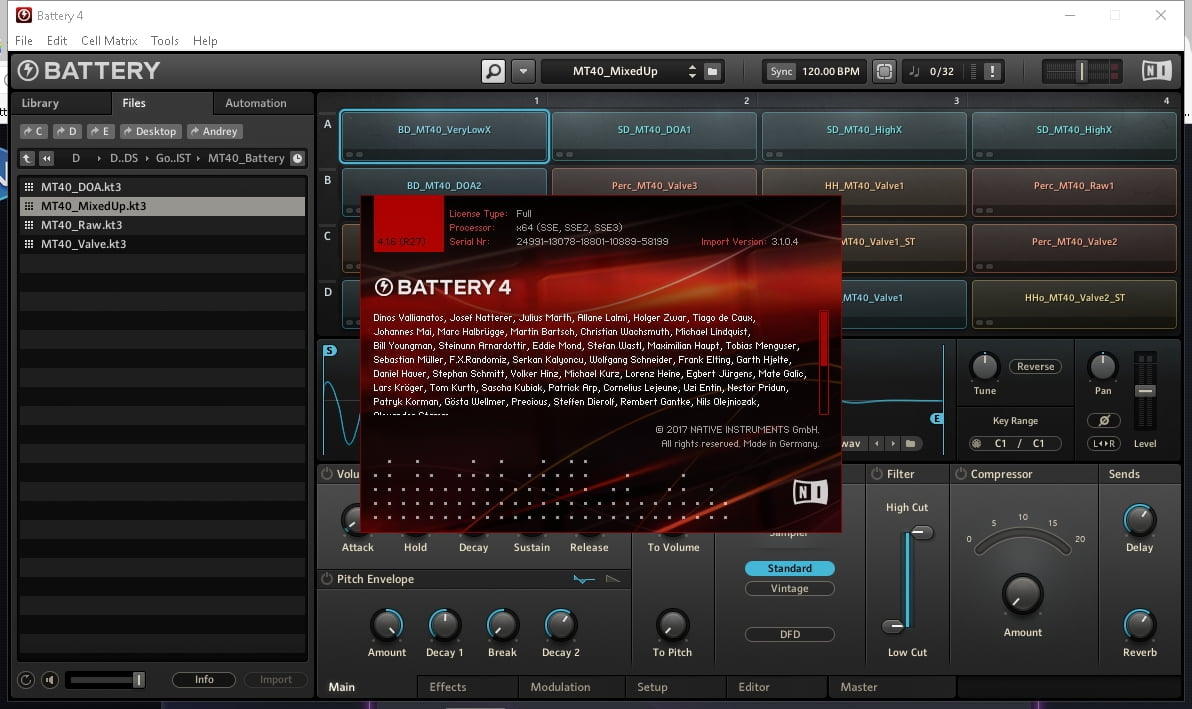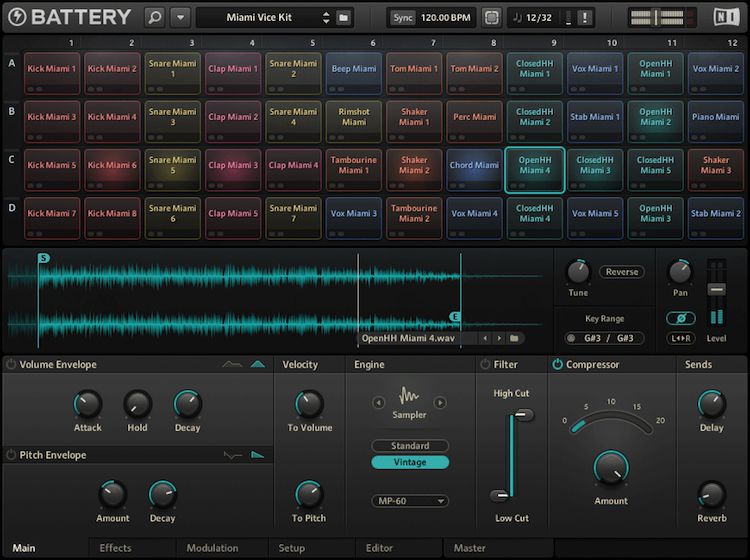
Native Instruments Battery 4. Software Sampler And
Until that announcement, the promise of a Battery refresh seemed very much in doubt due to the meteoric rise of Maschine, Native Instruments' hardware/software sampler and groovebox. When Native Instruments announced Komplete 9 this March, one of the two major product revelations came as a surprise to many: almost seven years since its release, the legendary Battery 3 drum sampler was getting an update. Since a week prior to my first post on February 26th, I'm still unable to create new Pro Tools tracks with Battery 4 or modify kits on prior tracks. Despite all attempts to eliminate other possible causes, Battery 4 plug in hangs when making any change (new kit, or change) and crashes when the plug in window is closed. Works fine stand alone.Native Instruments Battery 4 With Factory Library (MAC).


You can also distribute the velocity ranges across each layer equally at the click of a button.In general, dragging-and-dropping has become a central theme in Battery 4. The ranges of velocity that will trigger each sample layer can be set by clicking and dragging the edges of the layers themselves. Clicking on the editor tab reveals a row of open layers for the currently selected cell, and adding new sample layers is as simple as clicking and dragging a sample from the browser into an open layer. Sample layering is one of Battery's calling cards, and Battery 4 makes this process quite easy. This smart bit of functionality can really help you find the right sound quickly.Loading a sample from the browser into a cell in Battery automatically creates a single sample layer on that cell, spanning the entire range of possible velocity levels.
Inverter has now become a quick access option of the cell editor page, and delay and reverb still hold their place on the master page. Lo-fi, saturation, EQ/filter and compression all remain in the cell effects chain. Finally, the built-in effects in Battery 4 can be reordered freely—a seemingly innocuous change that results in loads more sonic sculpting power.Speaking of effects, you can find the same powerful set from Battery 3 in the new version. You also make host and MIDI automation assignments by dragging the automation points to the device parameters. You can set up sidechain compression by simply dragging one cell to the compressor module of another cell. You can route the audio output of cells to the four output busses by dragging the cell to the bus fader.
Considering the success producers had with the original Battery 3 effect arsenal, I think NI's approach here was on point.It's clear Native Instruments heard the cries of the Battery faithful over the past couple of years and decided to bring it up to date with the latest tech in their arsenal, rather than letting it die in favor of Maschine. For example, the EQ/Filter and Compressor effects now support the Solid G-EQ and Solid Bus Comp analog-modeled algorithms, and the saturation module features a tape saturation mode. Many of the original effects have been beefed up with new modes as well.
Until then, the new additions to Battery 4 build on top of its already rock-solid foundation, making this an easy recommendation. As someone who uses both, it would be good to be able to use Maschine to control and sequence Battery natively (rather than just loading it as a VST and playing it with keyboard mode). The only thing missing, in my mind, is tighter integration with Maschine.


 0 kommentar(er)
0 kommentar(er)
